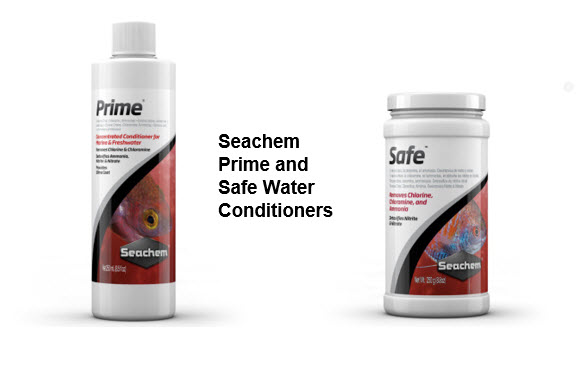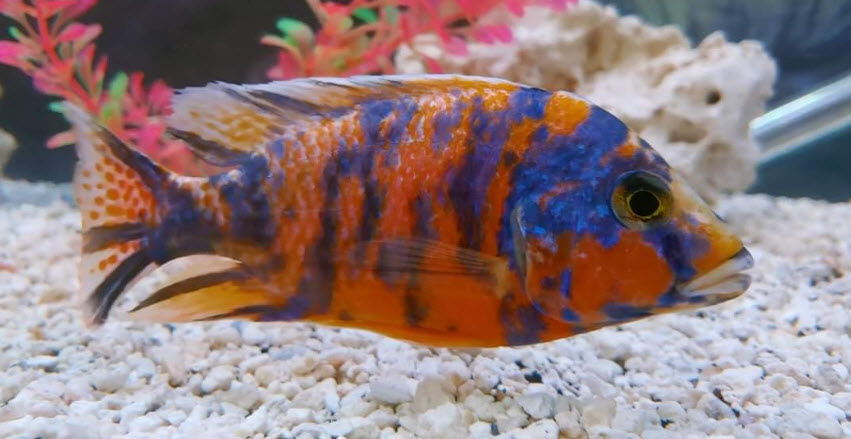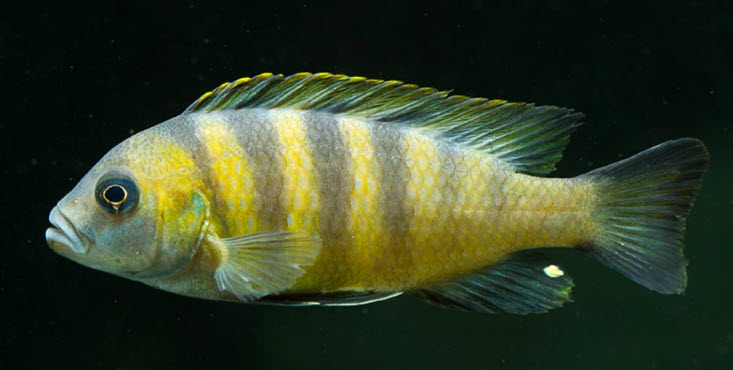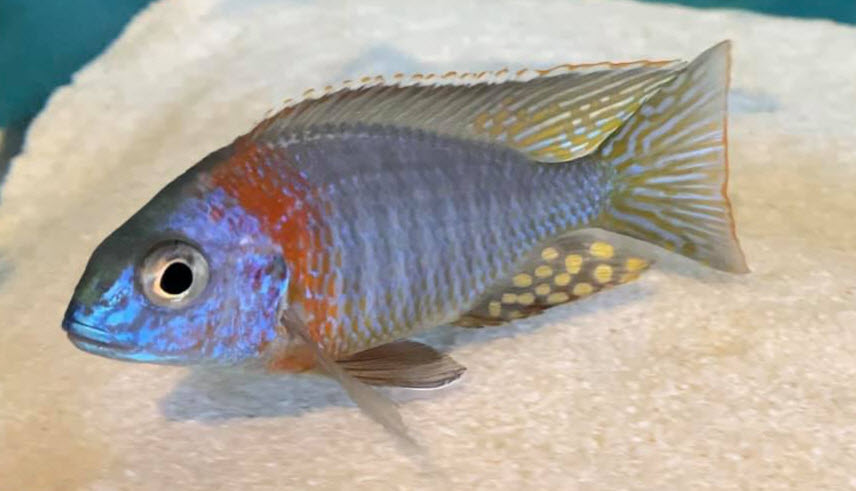
Conclusions
Six Articles prove six points (click on the article to read it)
Article # 1, Prime and Safe do NOT detoxify ammonia, nitrite, and nitrate.
Article #2, Prime and Safe used during cycling lengthens the cycle time.
Article #3, Prime and Safe are both sodium dithionite
Article #4, All conditioners are equally effective with chloramines.
Article #5, Prime is not more concentrated than competing products
Article #6, Safe can be made into Prime.
Seachem Prime and Safe
Prime and Safe are two conditioners made by Seachem. Prime and Safe are used by easily two thirds of the hobbyists. A recent poll that asked “what water conditioner do you use” had 28 out of 38 (73%) respondents saying either Prime or Safe. This is based largely on a host of claims made for the products.
All conditioners including Prime and Safe do the same thing, They utilize some form of sulfite (-SO3) to convert chlorine gas to chloride with the production of a sulfate (-SO4). Prime and Safe work the same as all the others. But Seachem’s claim of “temporary detoxification of ammonia“ is just snake oil marketing hype. By the very test recommended by Seachem to “prove” its Prime and Safe products “detoxify” ammonia for the short term, Prime and Safe did NO short-term detoxification.

Prime and Safe both decompose in water to form quantities of sulfur dioxide gas. Sulfur dioxide gas has a sulfurous sewage smell. Sulfur dioxide gas also can irritate the gills of the fish. In sufficient quantity it can even kill the fish.
This gives the hobbyist three good reasons not to use Prime or Safe:
- No one wants a smelly tank
- No one wants the gills of their fish to be irritated
- No one should want to support a company making false claims
Note that I admit I am decidedly biased against the Seachem Company. I can’t help it. The amount of “pseudoscientific bedazzlement” they put out on ALL their products is just nauseating. They mix real science in with simply impossible “snake oil” claims in a manner which is very misleading to “newbies” in the hobby. And they have threatened to sue me for “libel”. So the dislike is mutual.

False Claims Expanded
Seachem makes a series of six claims about Seachem Safe and Seachem Prime which are false. This “snake oil marketing hype” needs to be called out for what it is. To go to an article proving each claim false simply click on the false claim as all six claims have links in them to articles:
Article # 1, Prime and Safe detoxify ammonia, nitrite, and nitrate.
The simple conclusion of this article is simply that no less than TEN tests done by three qualified scientists conclusively show that Seachem Prime does NO “detoxification” or “binding” of ammonia, not even on a temporary basis. Seachem has ZERO tests which prove Prime detoxifies ammonia. That is correct, ZERO tests.
The Aquarium Co-op blog has an article on it on a “Brief History of Prime” where a chemist supposedly experimentally “proves” Prime neutralizes ammonia. In the article referenced here, I duplicated the “Brief” experiments, adding some obvious controls needed. The controls added made it obvious the “Brief” was done to deliberately deceive a user of Prime into thinking Prime neutralizes ammonia. PRIME DOES NOT NEUTRALIZE AMMONIA, PERIOD, END OF DISCUSSION.
Article #2, Prime and Safe used during cycling won’t affect the cycle time.
A six run test was run to see the effect of Seachem Prime and Stability regimen on time to cycle. The test showed using the Seachem Stability and Prime regimen increased the time to completion of cycling by an average of 12 days.
Article #3, Prime and Safe are not both sodium dithionite
The Seachem labels for Safe and Prime identify them as sodium dithionite. The material data safety sheets, which by law must be accurate, identify Prime and Safe as sodium dithionite. The smell, crystal shape, and crystal color are identical to sodium dithionite. And a highly accurate Raman spectrophotometer identifies both Prime and Safe as sodium dithionite. Yet the Seachem lawyer says Prime and Safe are not sodium dithionite.
Article #4, Only Prime and Safe remove chloramine, other conditioners are not effective with chloramines.
A simple test was done to examine the veracity of this claim about chloramine neutralization. using nine different conditioners, three replicates, 27 tests. The tests clearly showed that ALL nine conditioners tested did a decent job on chloramine.
Article #5, Prime is 5x more concentrated than competing products
There are some products which are much more “dilute” than Prime. The pure rip off that is Top Fin conditioner is ten times more “dilute” than Prime. So for Top Fin the claim is true. But the popular API conditioner is three times more “concentrated” than Prime.
Article #6, Safe cannot be made into Prime. If diluted into a liquid, Safe must be used immediately.
Eight tests showed that Safe can indeed be made into a solution of Prime and stored for at least a four month period with no reduction in its efficacy.
Conclusion
All six of these claims are proven false by testing delineated in each of the six articles. Note that the person doing these tests is a professional research scientist with degrees in chemistry. But also note than all these tests (except for the spectrometer) are very simple and can be done by anyone. They do not require any chemistry background. This was very deliberate. Any hobbyist is heartily encouraged to duplicate any and all tests done here.

Seachem Facility
A YouTube video maker (Kaveman) made a video of a tour of the only Seachem “manufacturing” facility. The video was quite revealing. The Seachem faculty appears to be largely just a large warehouse. It has a bottling and labeling line and a decent sized office where some dozen employees reside. Then there were a few oversized offices for the executives. What is revealing is what apparently is NOT present.
There are no manufacturing facilities evident anywhere in the video. i.e. Seachem does not appear to actually manufacture any of its own products. There were no labs present in the video. No spectrometers, not even for QC. No analytical equipment at all was evident ANYWHERE. Offices, a huge warehouse, and a bottling line. That is IT. I found this very interesting. It might explain why Seachem can provide no testing data to back up its claims.
At one point in the video there is a photo of some 55 gallon drums of dry chemicals evident with some large taped on 8″ x12″ “labels” that said “Cichlid Lake Salt”. These drums are what a typical bottling line feeds out of. The video narrative said these drums were “stock for large aquarium facilities who use this salt”. When pigs fly. Cichlid Lake Salt is useless and would not be used by large aquariums.
In some of the offices there were some decent sized freshwater aquariums. The freshwater tanks were all obviously very new with small juvenile fish. There was only one marine reef tank that appeared to be relatively old and mature. There were NO testing tanks evident. Not even any quarantine tanks. HHhhmmmm … mmm.

Belief Perseverance Effect
Now there is a psychological phenomena called “belief perseverance effect” which is very strong. “Belief perseverance effect” says that if someone buys something, and especially if someone pays a lot of money for that something, even when presented with evidence they made their purchase in error, a normal person will read the evidence but not interpret the evidence correctly. Any facts presented in the evidence which do not coincide with their beliefs will simply be interpreted by the brain completely differently than the statement is written. This is called a “brick wall in the brain”.
For instance, the Seachem Ammonia Alert tester measures free ammonia and ONLY free ammonia and does not measure ammonium. This fact is repeated several times in the article on ammonia “detoxification” that is linked to below. Yet reader after reader of this article have come on social media pointing out that the “Seachem Alert test measures total ammonia (ammonia plus ammonium) not free ammonia and thus the testing was done wrong“. That is definitely called a “brick wall in the brain”.
Users of Prime who read this article will, to a man, refuse to belief Prime doesn’t detoxify ammonia, nitrite and nitrate. When faced with this it is best to just fold and let people damage their fish.
.
“Nothing dies harder than a lie that people want to believe” Calvin
.

An Interesting Social Media Exchange
A comment was given on a Facebook forum to the effect that the Seachem test for ammonia (and NOT ammonium) that is recommended by Seachem to look for temporary ammonia detoxification was used to test the claim that Prime temporarily detoxifies ammonia. The comment said the tests showed Prime actually did not do any detoxification. The comment was posted on a Facebook aquarium group. The following are actual comments that came back:
.
1, “That article in itself is bad science. The alert disc reads total ammonia, so will still show any that is in the water column even when treated with Prime. A test kit for FREE ammonia would reflect the reduction of ammonia as it gets bound to the ions in prime.”
2, “The Seachem Alert test can’t be used like he is doing it because it measures the wrong type of ammonia. Prime does bind the ammonia for 24 hours. Alert just doesn’t measure it.”
3, “I take what any site says in regards to anything like this with a grain of salt. Plus what I read of that article he was using the ammonia alert disc which has been proven to be inaccurate and fail at times. Prime does work in detoxifying ammonia and nitrites when I’ve had a cycle crash before. This article is pure bullshit in my opinion.”
4, “Yeah I thought it binds the ammonia ions to turn it into ammonium which is harmless to fish but was still test as ammonia by the Alert test“
.
Obviously the people making these comments either didn’t even read the articles on Prime or Safe or they read them with a huge amount of “brick walls in the brain”. There is no point to telling the people above the errors in their statements. We learned a long time ago it is best just to let it go.
Note that there is another interpretation of these comments. The comments share some very common themes and syntax. If one is paranoid one can possibly conclude these comments are from the marketing department of Seachem through its many fake Facebook accounts. HHHHhhhmmmmm….mmmm.. For more on that go to this link:
1.4.1. Fake Facebook Accounts

If one takes a new aquarium and adds a heavy loading of fish and feeds those fish heavily there can be a problem. If one then adds Prime or Safe as “ammonia neutralizing” additions and if one is expecting Prime and Safe to detoxify the ammonia, one can expect to have an aquarium full of sick or even dead fish. What is unclear is how many newcomers add moderate amounts of fish and Prime and Safe and damage their fish with ammonia levels in such a way that they die months later. Ammonia is a “slow” poison, and can take months to show its effects.
If you want to compare and look at all the various conditioners go to this link:
5.5.3. Water Conditioners
.
Return to Poisons Menu
Return to Conditioner Page
.
Aquarium Science Website
The chapters shown below or on the right side in maroon lead to close to 400 articles on all aspects of keeping a freshwater aquarium. These articles have NO links to profit making sites and are thus unbiased in their recommendations, unlike all the for-profit sites you will find with Google. Bookmark and browse!
.

Dave says
In reply to Kyle …. The article on garbage can conditioning can be found at http://aquariumscience.org/index.php/5-5-2-1-ammonia-in-chloramine/
kyle says
I had somehow missed Article # 5.5.3.2.1. Having now read it i can pretty clearly see that there are 1) many confounding issues one must control for and 2) that the results in total don’t look good for sodium dithionite/thiosulfate WRT ammonia (I try to leave “Prime” and “Seachem” out of it, since that just begs name-calling and commercial issues to rise above the chemistry, which is the only aspect I am interested in. I have no corporate loyalties). I am a degreed engineer, with a minor amount of tangential chemistry knowledge, only just enough to make myself dangerous, so sometimes I need a little help here and there to get across the line.
The reason ammonia can’t be reduced (meaning gaining electrons, opposite of oxidation) is because NH3 is fully protonated, and thus has its electrons. Aside from NH4+ which is the ionic form in water and determined by pH. Is this correct?
Also, I see where you actually specifically analyzed “A Brief History of Prime” – like I said forgive me i missed this article and it would have simply answered my questions. I thought it was very weird they went all the way up tp 11 pH, when 8.x would have been more reasonable and applicable. Forcing out the ammonia through gaseous exchange is an interesting tactic.
I wonder, then, what confounding variables caused my results… I shall have to look into this. But i still have a problem (or maybe not!) of having tap water, that in the summer can read over 8.0 pH and 2 ppm total ammonia. While not in the danger zone specifically, if there was something to be done about it, i would surely like to do it. I have heard mention of “trash can conditioning”. My setup as it stands is i have a 15-gallon butt that i fill with tap water. Inside i have a heater that brings it to 76 deg (my room temp is a touch chilly at 65 deg F even in summer) and i drip water change at something like 1-3 drops /sec until the butt is 2/3 empty where i refill it (my tank has an overflow bulkhead that handles the drip out). If i just aerated and warmed the butt, would that be enough to have the ever-present nitrifying bacteria take care of this over the course of the week? If i ever had to do a large, singular water change, i could also use this conditioned water. In the drip i have no concern, the mols of ammonia coming in are well below what my bio filter can handle (that is now packed with K1, thanks), its more the large water changes, i fear. Do you have an article on trash can conditioning i have also missed?
Be well,
Kyle
Dave says
In reply to Kyle …. I wrote an Article # 5.5.3.2.1, Prime and Safe detoxification of ammonia, nitrite, and nitrate. https://aquariumscience.org/index.php/5-5-3-2-1-prime-safe-and-ammonia/
The simple conclusion of this article is simply that no less than TEN tests done by three qualified scientists conclusively show that Seachem Prime does NO “detoxification” or “binding” of ammonia, not even on a temporary basis. Seachem has ZERO tests which prove Prime detoxifies ammonia. That is correct, ZERO tests.
The Aquarium Co-op blog has an article on it on a “Brief History of Prime” where a chemist supposedly experimentally “proves” Prime neutralizes ammonia. In the article referenced here, I duplicated the “Brief” experiments, adding some obvious controls needed. The controls added made it obvious the “Brief” was done to deliberately deceive a user of Prime into thinking Prime neutralizes ammonia. PRIME DOES NOT NEUTRALIZE AMMONIA, PERIOD, END OF DISCUSSION.
kyle says
Hello sir,
In my endeavor to always know more, and to dig one level deeper into everything i try to do, I have encountered many layers of well-meaning advice, parroted info, pseudo-science, and legitimately acquired anecdotal data. I have also had the benefit of stumbling upon some nuggets on knowledge that are actually well-resourced and backed by many long-standing studies or relatively new breakthroughs. One such Item i came across, just ahead of but near-enough to finding your site is an article “A Brief History of Prime” in the aquarium Co-op blog. The entire post seems very well sourced and knowledgably put together. It comes to a very different conclusion and result than what you espouse here. Namely that sodium dithionite (and comparable molecules) does indeed chemically alter ammonia and ammonium, and does so permanently.
Having read it all, I decided to conduct experiments on my own with my tap water which has a total ammonia of ~2ppm out of the spigot. I tested using three different volumes of water: 5 ml, 1 gallon and 15 gallons of tap water. In the larger volumes I did single doses of sodium dithionite as per manufacturer’s directions, and measured the total ammonia levels over the next twelve hours, and again 3 days and 7 days later. My results were that it did indeed remove ammonia, or at least my ability to detect it using both the API and Fluval ammonia tests. My results differed from the other author’s results in that I had to use nearly 3x the amount of sodium dithionite to neutralize/remove 1 ppm of ammonia/ammonium as the author claimed (they claimed 1 dose which is 1ml of solution per 10 gallons removes 1 ppm of ammonia/ammonium) and found that it was closer to ~.33ppm per dose. But at the end of each and every test, compared to the control (which showed no reduction) i was able to get my total ammonia to undetectable levels.
Now of course we can have the separate but tangential discussion about whether or not this is required for 2ppm ammonia (which has historically always given me headaches during water changes) and we can talk about the byproducts of sodium dithionite being as bad or worse than the ammonia, but their science at least seems well backed up and well sourced. They even provide a plausible explanation as to why a lawyer might deny the use of specifically “sodium dithionite” when chemical analysis shows it to be: namely that sodium dithionite has many synonyms and Prime may not be sodium dithionite alone.
At any rate, I am very curious if you have read this meta-analysis before and what your take on it is.
Be well,
Kyle
In short
Dave says
In reply to Katie ….. depends on your pH. If you have a high pH (over 8.4)ammonia is gassing out your fish. If your pH is below 8.4 it is more likely chloramine which is gassing out your fish. If pH is over 8.4 you’ll need to do garbage can conditioning of your tap water. If the pH is less than 8.4 you will need to measure the total chlorine and add thiosulfate conditioner accordingly.
Katie says
Hi my name is Katie. I have a 150 gallon freshwater tank with and Oscar and Pleco. Recently I’ve noticed some odd behaviors after a water change. So I tested both my tank and tap water. Unfortunately both my tank and my tap water are reading 0.50ppm of ammonia. I added some prime but quickly stumbled upon your article afterwards. My poor fish are obviously uncomfortable and I can’t help them what should I do?